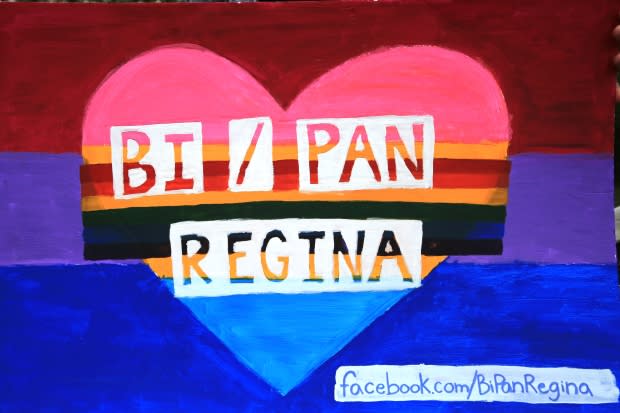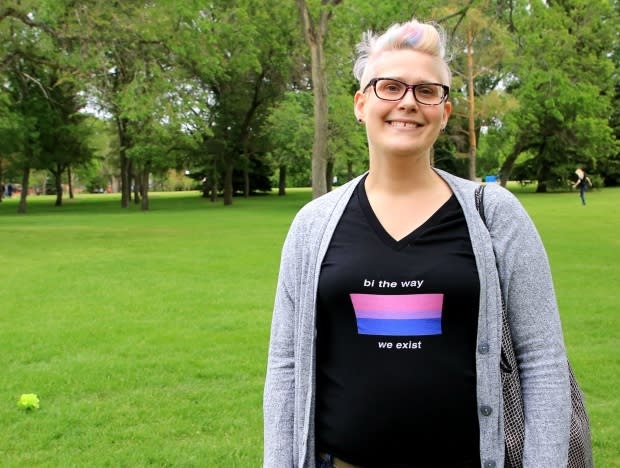Regina bisexual, pansexual group joins Pride parade to show they're here and proud
Last year, Annaliese Bos decided to participate in the Queen City Pride Parade for the first time, hoping to join the bisexual and pansexual group in the walk.
But she quickly found out there wasn't one.
The omission was surprising, she says, because it's important for those groups to be represented.
"It was really hard to find other people you identified with," Bos said.
Bos took matters into her own hands and formed the group Bi/Pan Regina. On Saturday, they marched together for the first time in the Queen City Pride Parade.

When they came together, the group's members found a few of them had very similar backgrounds.
"It seems like there's there's a common thread, kind of, between all of us. It was nice to have that sense of belonging for almost the first time, really," Bos said.
Bos identifies as pansexual — someone whose attraction to others is not based on sex or gender. Bos also refers to herself as bisexual as the term is more common.

It can be difficult for people who are bisexual or pansexual to fit in, Bos said. She grew up with mainly straight friends and without ties to the queer community.
"I didn't know where to go to find other people like me," Bos said. "Going to a gay bar, gay club seemed like I didn't deserve to be there. Going to a straight club, I didn't seem to fit in there either."
Bos decided to come out publicly about her sexuality around two years ago. She had been honest with partners but never told her best friend or family.
"I decided that I just needed to open up and kind of get that feeling of being closed and hidden off," she said. "It's a big weight to carry when you're trying to hide who you are."

Some in both the queer and straight communities don't fully accept people who are bisexual or pansexual, said Bos.
"It's just hard to understand, when you're only attracted to one gender, someone that gender doesn't seem to matter," she said.
For some who are straight, "it becomes hard for them to understand, because they don't understand attraction to same sex at all in that world," Bos said.
Even in the queer community, bisexual people are sometimes viewed as having one foot in the straight world, Bos said. Some think bisexual people "can be straight-passing and we don't have to deal with as much struggle and heartache of coming out if we choose not to."
Bos pointed to statistics from the American organization GLAAD, which say 52 per cent of people in the gay, lesbian and bisexual community identify as bisexual — making them in a sense a quiet majority in the community, she said.
And as more people — including celebrities and others with high profiles — come out, awareness and visibility are increased, she said.
"Having people at the forefront, bringing their sexuality out in public really helps for us to feel like we're becoming more accepted."

As for the Queen City Pride parade, Bos thinks having a visible group can help shift people's ideas about bisexuality and pansexuality because it shows they're just ordinary people.
"It's not as different as people think. It's more common than people think," Bos said. "Also, for people that are struggling to come out … they'll know that there's a community there if they choose to do so.
"I think we'll help a lot of people."

